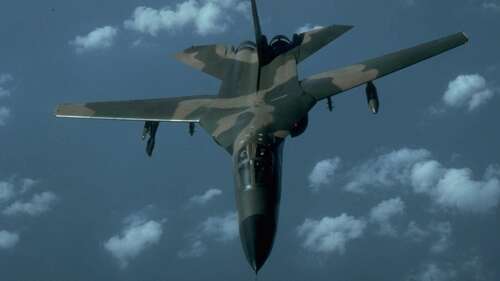
In the 1960s, General Dynamics and then United States Secretary of Defense Robert McNamara aimed to establish American air dominance by creating a multi-role supersonic combat aircraft capable of flying below enemy radar. To this aim, McNamara would create what was known as the Tactical Fighter Experimental Program, or TFX.
In 1964, the first production model of the General Dynamics F-111 Aardvark would take flight. The most notable feature of the craft was its variable-geometry wings that would shift mid-flight to reduce the plane’s wingspan and streamline them into a triangular shape. While this wing design would go on to inspire modern-day jets, like the F-15 and F-35, it added considerable complexity and room for error in the 1960s.
Faulty parts due to poor manufacturing and increasingly stringent requirements from the Navy’s F-111B version delayed the development of the Aardvark until 1968. Initially, 159 F-111s were delivered to bases in Southeast Asia, where they would eventually be used in flight tests and bomb strikes against the North Vietnamese, only to have poor results.
Instead, the military would use the F-100 Super Sabre and F-105 Thunderchief for bombing campaigns during the start of the conflict, though the F-111 would be used later. Even if the F-111 would eventually go on to broader use by the United States and its allies post-1973, it didn’t have a great start.

